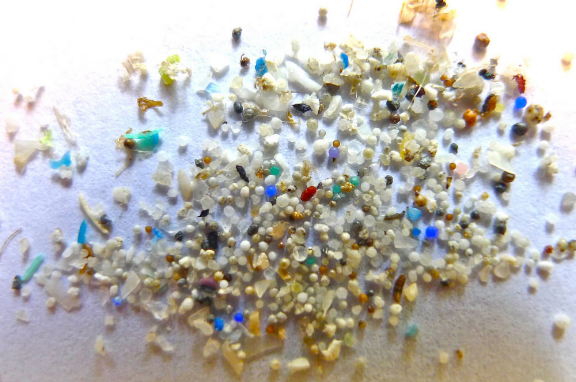The Plastics Industry is Leaking Huge Amounts of Microplastics
Published on by Water Network Research, Official research team of The Water Network in Academic
Millions of plastic pellets are leaking out into the environment from a manufacturing site in Stenungsund, Sweden. This has been shown by a new study conducted by researchers at the University of Gothenburg.
Despite several international and national sets of regulatory frameworks, the leaking continues.
BY: CARINA ELIASSON

Representative image, Source: Flickr, Author: OSU, Labeled for reuse
The problem of plastic pellets in marine environments has been reported since the 1970s and the first recommendations for legislation were introduced in the USA back in the 1990s. However, in Sweden, these spills have only received attention in recent years.
Small plastic pellets are used as raw materials. The pellets are shipped from the manufacturing site to different plants where they are used in production of various types of plastic goods.
The pellets that leak out can be found in the whole archipelago
In the recently published study, the researchers also investigated how pellets have spread in the coastal region, and they could see that the plastic pellets end up on nearby beaches, in the fjord and the nearby archipelago.
In contrast to other plastic waste, for example, packaging material, these plastic pellets have never been of any use.
“In order to better understand how plastic pellets end up in the environment, we have documented, measured and calculated the flows of the pellets via waterways leading out from the production and distribution plants in Stenungsund where approximately five percent of the polyethene that is used in Europe is produced,” says Martin Hassellöv, Professor at the Department of Marine Sciences, University of Gothenburg.
The research team’s calculations show that continuous leakage leads to between 3 and 36 million plastic pellets spreading from the Stenungsund production site every year.
“When we analysed the smaller fractions, which are called fluff and fragment, the plastic leakage was more than a hundred times greater than when we only counted the pellets. Moreover, we have seen that there are more leakage problems in conjunction with the transport, cleaning, loading and storing of pellets further along the production chain,” says Therese Karlsson, doctoral student at the Department of Marine Sciences.
Pellets are often found in the stomach content of seabirds like fulmars, which feed from the surface of the sea.
Existing regulatory frameworks should prevent leakage
There are several international agreements, EU legislation and Swedish laws that are intended to prevent this sort of spills of plastic.
“The accountability regulations in the Swedish Environmental Code are intended to prevent the leaking of large amounts of pellets, especially in areas like the one around Orust and Tjörn where there are a number of nature reserves,” says Lena Gipperth, Professor of Environmental Law at the Department of Law.
But the study shows that the existing regulations have not been applied, and this may be the result of inadequate supervisory procedures and control programmes.
The study has been published in the scientific journal “Marine Pollution Bulletin”.
Title of the article: The unaccountability case of plastic pellet pollution
Link to article: https://doi.org/10.1016/j.marpolbul.2018.01.041
Source: University of Gothenburg
Media
Taxonomy
- Water Pollution
- Contaminant Removal
- River Studies
- Pollution
- River Engineering
- Plastic Parts
- Polymers & Plastics
- Plastics
- Pollution